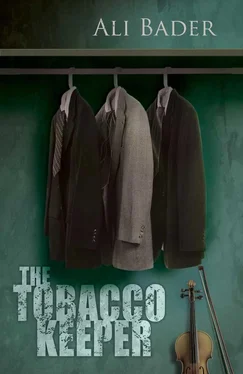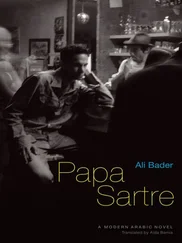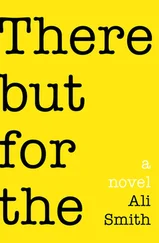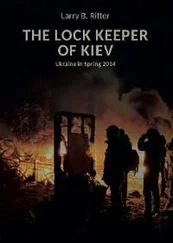I don’t know why, but from the time he arrived in Tehran he insisted on talking about a painting by Andy Warhol. This painting by the master of kitsch showed Shah Mohammad Reza Pahlavi sitting on the throne, the very throne that had been stolen by Nader Shah when he invaded India. Known as the ‘Peacock Throne’ and inlaid with thousands of jewels and precious stones, it was the seat of Iran’s emperors in coronations and formal ceremonies. There the Shah sat, in Warhol’s painting, wearing his Shah-of-Shah’s suit and giving his distinctive look. The emperor sat on the plundered Peacock Throne itself, wearing the crown of former emperors and surrounded by their jewels and gold objects. But at that time I wasn’t aware of all those things. It was clear that he made frequent comparisons involving art. This tendency may be traced to his first persona when he first visited Moscow and stood in trepidation and apprehension in front of the Russian conductor, waiting to hear the advice of the bearded man whose face was as red as wine, urging him to find in his people the inspiration he sought for his art. It may also be traced back to the statement made by the local Muslim broadcaster with his dark, Jewish-looking face, who complimented him on embracing classical art. But the most significant change no doubt happened later in the sphere of politics, with the increased use of kitsch as a tool of political propaganda both in Tehran and Baghdad.
The key question that preoccupied me at that time was when had Haidar married Tahira Ismail al-Tabtabaei, for he never mentioned the date in his letters. There was a letter from a later date, however, which he sent while on one of his trips to Europe, and where he told Farida that he’d married Tahira and had had a son Hussein from her. This question puzzled me until Faris and I went to Tehran.
Faris Hassan and I landed at Tehran Airport on 3 May 2006. The Elburz Mountains were still snow-capped despite the warmth of spring. The airport was very busy. We left the terminal building at night, took a cab and went straight to the city centre. At that hour, it was virtually impossible to find a room at any cheap hotel or khan , so I asked the driver to go straight to Sarjashma. I had no idea why I told him that we were staying there. I imagined that the Sarjashma Hotel, where Haidar Salman had stayed in the fifties, was located in the Sarjashma neighbourhood, and had no idea that there was also a popular district in the southern and more deprived part of Tehran with the same name. When we got out of the cab, of course we didn’t find the hotel we were looking for. Instead, we found a number of cheap hotels and small khans all along the main street. We started knocking on the doors of the hotels and khans , one after the other, but we received only rejections or apologies. Because our hair was dishevelled, our clothes creased and our faces sullen, our appearance didn’t encourage anyone to offer us a room.
After much trouble we found an extremely shabby hotel, barely adequate as a stable or barn. Still, we slept in clean but uncomfortable beds. The room lacked furniture and the toilets and bathrooms were communal. The place was also extremely noisy. When the sunbeams began to penetrate the room, I woke Faris. After washing our faces and brushing our teeth, we picked up our bags, paid the bill and left.
We walked along the street opposite the old hotel. In the middle of the large square, a very tall and bearded policeman stood directing the cars, bicycles and motorcycles ridden by turbaned clerics. Around the square were shops selling spices, nuts and groceries, in addition to barbershops, traditional bone-setters, small restaurants and bookshops. Tehran in its glorious beauty represented the Eastern city par excellence. Women wore the chador, men strolled peacefully through bazaars, chickens pecked at the grain in the rubbish and cows looked in the grass for watermelon rinds. At the corner of Old Zorkhana Street, men as hefty as Sumo wrestlers appeared.
Haidar Salman’s letters proved to be my guide to the city. My task was to find specific information concerning his residence in Tehran, both in the fifties, when he arrived from Moscow for the first time and in the eighties, when he was expelled back to the city as an Iranian subject. Despite this, I was as charmed by the city as he had been. Most amazing for me were the faces of people in that oriental, impoverished neighbourhood, for they seemed to be identical copies of the faces of the Iranian poor as depicted by Sadeq Hedayat in his fiction and the characters of Bozorg Alavi in his novel Her Eyes . Our curiosity led us to bookshops, where we found the works of Mahmoud Dowlatabadi, considered the Naguib Mahfouz of Persian literature, and of Forough Farokhzad, who was in many ways similar to Ghada al-Samman. We also came across the plays of Reza Burhani and the works of Saeed Sultanpour, who was executed by Khomeini and whose banned books were only released after the latter’s death.
The streets of south Tehran were teeming that day. Faris suggested that we dine at Khanzad restaurant, where Hekmat Aziz had worked, and from there head north. The restaurant stood on Vali Al-Asr Street, which, in his letters from the fifties, Haidar Salman had called Pahlavi Street. The street was, as he had described it, extremely long. It stretched as far as the eye could see, from the south of Tehran to its north. Along the sides of the street were ancient Qajar trees with their huge trunks, as well as modern buildings, hotels, museums, cafés and restaurants. Women’s attire ranged from the chador in the south to Western clothes in the north, where they paraded with their colourful headscarves, jeans and high boots, and dragged little puppies by gold chains around their necks. The restaurant occupied the wide pavement of a street that was flanked by ancient trees. Dewdrops trickled from the leaves onto the white stones, and grass sprouted from the cracks in the pavement.
As we sat at a table outside, we felt the cold breeze blowing. At that moment, a blonde woman of about thirty walked past, wearing a loose scarf on her head and a pair of tight jeans. A police car suddenly stopped beside her. A bearded policeman and a policewoman in a chador got out. A heated discussion ensued among the three of them. The woman spoke loudly to the policeman. The policewoman came up to her and tried to drag her into the car, but the woman deflected her and screamed. Then, all of a sudden, she turned around and tried to run. The policewoman, however, took hold of her and, with the help of the policeman, dragged her by force into the car, slamming the door shut.
The north of Tehran was completely different. There were posh hotels, foreign restaurants and modern villas, which were hidden by walls and surrounded by large gardens that reflected extraordinary wealth. Their inhabitants were Iranian technocrats, high-ranking state officials, wealthy merchants, businessmen, engineers, doctors, writers and publishers, who were constantly travelling to the United States and Europe. In this area the women didn’t wear the chador at all, but went about in full makeup and elegant clothes.
We took rooms at the Siren Hotel. As soon as we’d dropped off our suitcases, we rushed out, took a cab and headed for the city centre. We wanted to visit the grand bazaar because a man there called Bahzad had been connected with Haidar Salman and his father-in-law. At the bazaar, we sat and stared at people’s faces until the prayers at the mosque were over. White birds flew in the blue sky and perched on the domes of the great bazaar. The vaulted arcades were lively and vibrant with faces and cheap outfits. The faces of the men were bronzed and wrinkled while those of the women were beautiful as they chatted nonchalantly. Everywhere were religious posters bearing invocations such as ‘Ya Fatima’, ‘Abul Fazl al-Abbas’ or ‘Ya Hussein’. These were placed on the façades of the shops that sold women’s clothes, on the city’s public and private transport system, on restaurants and, of course, on mosques and religious schools.
Читать дальше












